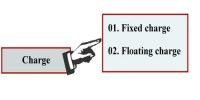A commercial bank is a dealer in capital or more properly a dealer in money. This bank gives minimum interest to depositors and demand maximum interest from the borrower. By these processes, commercial banks earn a profit and continue their business.
Ancillary Services of a Commercial Bank:
Banking is the business of providing financial services to the private individual’s corporation; govt. agencies and businesses and industries. The main objective of a bank is mobilizing deposits and tending these to those people to finance their consumption or business activities. Bank also render services like issue of letter of credit and guarantee, remittance or money, a collection of utility bills, Underwriting of capital issues, portfolio management as well as locker’s services and custodian of valuables.
Five ancillaries of services of a commercial bank are as follow:
(1) Collection of Deposits and Lending: The commercial banks receive deposits from one section of the public and lend it to another section with a price tag that we call interest or its equivalent like “profit” or “makeup”.
Today, commercial banks have worked out various means of collecting deposits. They are called current or demand deposits, fixed deposits, saving deposits, short term deposits etc. There is also a scheme that gives the depositors double the amount of deposited money after a specific period or fixed amount of money. There are other variations like children’s education scheme, marriage scheme etc.
Lending of money whether we call it loan, credit, accommodation or any other expansion can take numerous forms. It may be for a short term, medium term or long term; it may carry a fixed interest rate on a floating rate of interest; it may be for fixed capital or working capital; it may be in the forms of cash credit, hypothecation or overdrafts; it may be seized by hypothecation, pledge, lien, mortgage of property or financial obligation; it may be given out on a clean basis or by means of bill discounting or against a letter of credit.
(2) Cash Management: Although deposits and loans are the basic banking services provided by banks these institutions provide a wide variety of other services to customers. For customers, these include cheque cashing, foreign currency exchange. Safety deposits boxes in which consumers can transfer money from one financial institution to another.
Recently banks and corporations are becoming conscious of cash management to ensure available funds in response to the increase in the money market rate. Cash Management means –
- Raise the speeding up of a collection of cheques and bills payable.
- Careful controlling of the cash disturbance.
- Monitoring of cash flows.
- Investing the idle money.
(3) Credit Card: Credit card is a popular process in retail electronic banking. Generally, if the clients have creditworthiness or have enough money in the deposit account, then the bank provides this plastic card to the clients. In spite of having a debit balance in the deposits account, a client can use this card. Generally, in a credit card, the loan account of a client is debited to reimburse the transactions conducted through the credit card. This card is used for payment of a product or service or for withdrawing cash from some specific Institutions.
Bank and other financial institutions issue a credit card to identify their valuable and responsible customers. Purchase of products or services and other bill payments by using this card in a particular place. With the help of this card, anyone can withdraw advance cash from the financial institutions. A card issuing bank often extends a grace period to the clients. If the client deposits money in excess of the balance in his account to cover the purchase amount, the card issuing bank will not charge any interest on the money used by credit card. But if the grace period, which is usually 15 days, exceeds the client will be required to pay interest on the excess amount paid by the bank.
(4) Foreign Finance: Capital importing developing nations demand capital in excess of their own domestic capital base. That’s why external finance is so important. The reason behind this:
Broaden their domestic capital base to finance a more rapid rate of economic growth and constant rise of consumption over time.
- If the marginal productivity of capital exceeds the interest rate charge on the capital repayment.
- Lack of well-developed money and capital market due to financial repression.
The forms of foreign finance are given below:
- Short and long term private and official loans.
- Foreign direct investment.
- Portfolio investment of debt, Securities and equity.
- Concessionary and non-concessionary finance from IMF and World Bank.
(5) Internet Banking: Internet has become very useful for both the clients and organizations. It is very popular in the bank service industry. Normal banking transactions and fund transfer related activities can be like, auditing, payments of bills, investment, stock exchange activities, and many other activities can be done using these internets banking system. Financial institutions can solve banking transactions through the internet to get a quick solution.
Usually, the following four items are observed in the internet banking structure:
Net Presence: Net presence means standing at the primary level of internet banking. It represents participation in internet banking, though insignificant but with a hope to install at a large scale in near future.
Interactive Site: Interactive site means personalized inter-communicative tool between bank and clients. Here with the help of websites, a personal relationship is established with every single client through email, custom fill-out forms etc.
PC Home Banking: Internet is a global network of an interconnected network in which they can communicate and exchange information, data through satellite. In internet banking, a client can do his entire general banking activities.
Full Banking Internet: Full banking internet means all banking activities will be on the Internet. It will happen in near future.
















